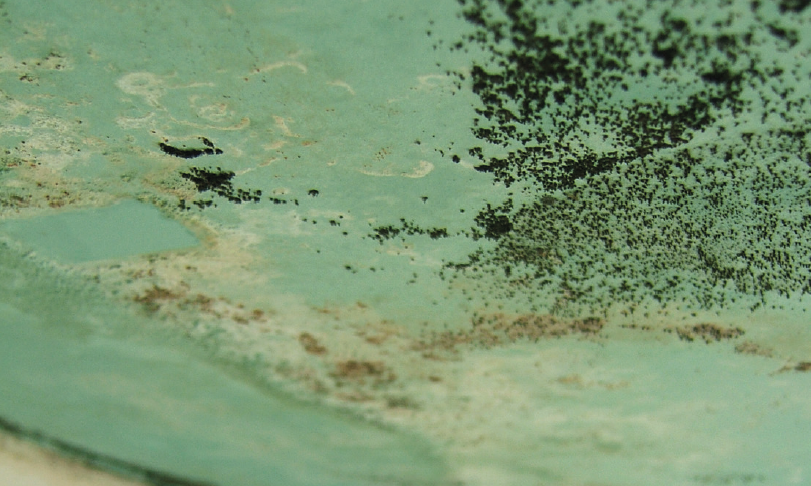How to stop mould in your wardrobe
Mould is good for a few things but when it affects your house and furniture, it isn’t a welcome guest. No matter how clean your home, there are various causes which allow mould to develop, and the effects are irritating. Here are some tips on mould prevention, with a particular focus on wardrobes and the contents inside.
If you’re struggling to remove mould from your wardrobe, then it could mean there are more in-depth reasons as to why it may be reappearing. In this health and safety guide, we give you some tips on mould prevention, with a particular focus on wardrobes and the contents inside.
Contents:
Where does mould come from in wardrobes?
Mould develops in areas that are periodically damp and suffer poor ventilation. It’s more common to have mould in winter with windows shut and heaters on, however, it can happen at any time of year. A musty smell will occur in a property as a result of mould. On contents within a wardrobe, it’s noted by a change of colour and patches where the mould has eaten away at clothing fabrics. Most commonly found mould likes cotton and linens because they contain cellulose. Mould on clothes and other contents items is indicative of elevated atmospheric conditions and not wet or damp structures. The mould spores food source can be oil from your skin, making clothes in a wardrobe a prime breeding ground for mycelium.
How to prevent mould from growing in wardrobes
As soon as you see, mould on clothes inside your wardrobe has to be removed. This must happen in a controlled manner usually at the dry cleaners. Here are some ways you can prevent it:
Improve air circulation
A lot of clothes pushed up together in a wardrobe minimises the air flow. This results in poor air circulation and would enable the mould to grow and spread easily. Consider options to reduce the number of contents in order to improve air circulation.
Improve ventilation
Improve ventilation in the property by opening windows where possible. Leave the wardrobe doors open allowing for circulation of clean fresh air.
Install static vent plates
We would recommend fitting static vent plates to the top and bottom of the wardrobe, especially to units fitted against colder exterior walls. The vents will introduce and expel air from the room into and out of the wardrobes. This will create a balanced atmosphere within the unit and the room it is in. Without vents, the still air in the cupboard cools and, with colder exterior walls, can lead to the right conditions for mould to develop.
Ensure your clothes are dry
Once you’ve washed your clothes, don’t be tempted to put them away before they are dry. Damp clothes can attract mould faster than if they were dry.
Have a gap behind your wardrobe
With stand-alone wardrobes, consider setting off the cooler walls to make sure there is a sufficient gap behind for air circulation. Again, this will improve ventilation and reduce the potential for mould to develop.
Air extraction
Once you understand that mould on contents is driven by internal atmospheric conditions, anything you can do to prevent excess condensation always helps. Simple things like closing the bathroom door during and after showering until the air has exited via a vent or window will help stop the spread of excess humidity through your home. If you have extractor fans you should always use them. It’s especially important when showering and cooking, and any window trickle vents fitted should always be open.An extractor unit fitted next to or in a window will draw fresh air in when opened and expel it straight away. Always ensure you close the window when operating the unit to ensure maximum capability.
Mould is a nuisance particularly when it is affecting clothes in a wardrobe. The good news is you can easily prevent it with our top tips!

Trusted wardrobe mould removal company
In the UK, a significant number of tenants are living in unsuitable conditions, ranging from dampness to severe mould infestations, and a substantial portion of them struggle to get the help they need, despite reaching out to their landlords and letting agents. If you’ve spotted signs of dampness, condensation, or mould growth in your wardrobe, it may be indicative of a more serious property-related issue.
Using SMART knowledge, our team of industry-leading experts employs state-of-the-art technology to provide comprehensive solutions for addressing issues such as penetrating damp, black mould, and various condensation problems in wardrobes. If you work in the public sector and oversee social housing for local councils, with a commitment to meeting the requirements of the Homes (Fitness for Human Habitation) Act 2018, or if you are a private landlord bound by law to ensure your tenants’ protection from internal atmospheric concerns, our expert team is here to assist you with wardrobe mould removal and the establishment of a healthier living environment.

